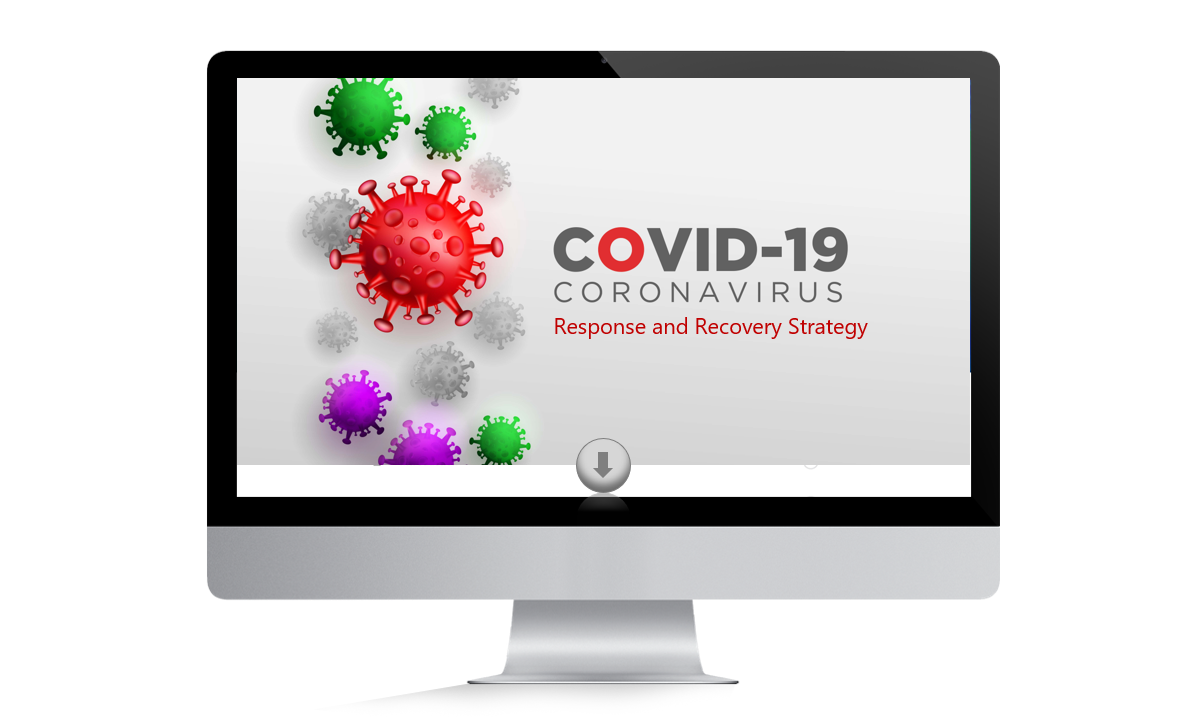Are you winning or losing to the coronavirus pandemic?
The economy, businesses, and lives have been disrupted. Now is the time to put in place a response strategy to respond to the covid19 challenge. The good news is the covid19 risks are systematic – or general risks that affect all the businesses. Unlike unique or unsystematic risks that affect a sector or business, covid19 has affected all companies in equal measure.
Covid19 happened suddenly. It is like an airplane that is moving normally and suddenly enters think clouds that cause turbulences, and all the passengers in the aeroplane hold on their seats helplessly until the bad air is cleared. This is what has happened to the world.
In January 2020, everything was moving normally in the world.
Suddenly, it happened. The world witnessed in awe, the first turnaround by which the Chinese government built a specialist hospital for the SARS-like virus. We then learned this was a novel virus, meaning it was happening to mankind for the very first time, and therefore there are no known vaccines or cure. Then the virus got a name, coronavirus. Today we know it as #covid19 because it came to the word for the first time in 2019. As of today, so many people have died. It is so bad.
Look at your business like a person losing blood. When a person gets injured in an accident, first responders start by doing everything possible to help the victim stop losing too much blood, which could be fatal if not stopped instantly.
What actions are you making to your business to stop the ‘bleeding’ of cash? To your business, what is the ‘blood’ that you must protect so that your business does not die?
Formulating the #covid19 response strategy
These and many questions must be answered. Here is how to answer them:
What are your top 10-20 customers that bring over 80% of your revenue? Define these customers and what it takes to keep them satisfied? Have they been adversely affected by the covid19? Do they need your support during this period to win? What kind of services do they need? Can your business suggest new products in response to the pandemic which you can provide? What changes in your internal capabilities and system to continue servicing your top clients?
The output should be a table that lists the top 15 -20 customers/partners and the risks/ opportunities available. Have a primary contact person for each customer at the key decision-maker level. Check-in with your customers to make sure they are well and discuss to explore covid19 response opportunities. Before you make that call, explore the proactive initiatives that your company could do to reward the customers for their business. Now is not the time to pitch. It is a time to offer support and deepen relationships. Analyze the risks to your business based on the customers’ current challenges. Next, do the same for other identified key stakeholders specifically critical suppliers and partners.
Conduct a business impact analysis (BIA) to define the resources at risk, the nature of the risk, and the response strategy. A BIA explores the impact on your business if you lost any of your customers, supplier, partner, asset, or key processes as a result of the pandemic. You assess impact in terms of lost revenue or resulting losses and costs. Any item that causes the highest loss, in the shortest time, has a bigger impact and must be prioritized to be addressed first.
A good covid19 recovery strategy shall position you to win with your stakeholders against the competition. You do not want to lose your customers to the competition because, during the lockdown, you did not try to reach out.
Next, define the roadmap to recovery. What are your key covid19 pandemic phases as they apply to your business? What is the critical phase, emerging phase, and the recovery phase? What are the triggers, outcomes, and priorities at each phase of the coronavirus severity?
Then define the recovery plan. What are the key targets and indicators used to track the health of the business? Is your business losing too much blood or not? Define specific actions to undertake to keep the business moving. Establish a clear communication plan and resources to empower responsible people to drive the business during the pandemic. What shall trigger action? Create a clear base case, pandemic case, and worst-case scenarios that are aligned to your KPIs to provide clear visibility to monitoring the health of your business.
Thereafter, establish a covid19 response and recovery team. Define their key roles and provide resources to facilitate the team. The recovery team must make ongoing communication with the rest of the staff to avoid keeping anyone in the darkness of any impending changes.
Remember, transparency is the best business. Keeping people up to date with what is going on is the best management response to remove anxiety and manage the pandemic. You need everyone on the table during tough times like these. The worst thing your colleagues would want is to learn about your covid19 recovery plan from outsiders. It indicates that they are not valuable team members.
Remember your communication plan must define clear communication protocols and the frequency for briefing meetings.
To get help in documenting your covid19 response and recovery strategy, inbox. We also provide risk management services and board briefings. Want free covid19 response and recovery strategy templates to work with and do it yourself? Comment below or inbox.
Copyright Mustapha B Mugisa, 2020. All rights reserved.









